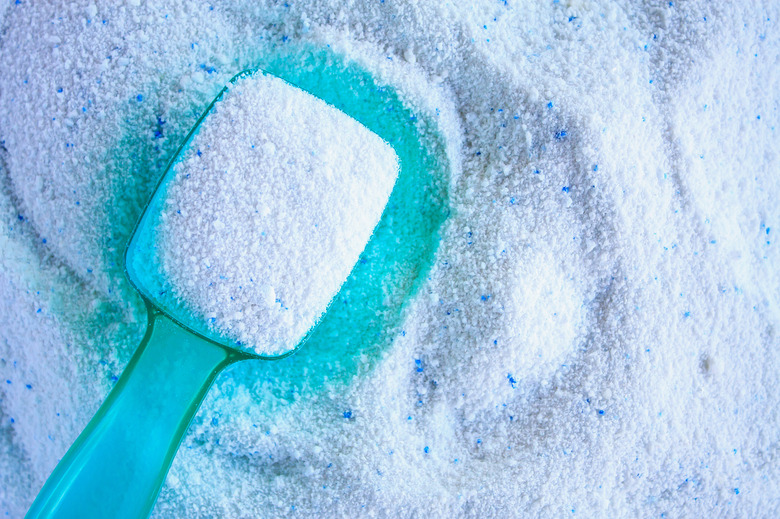How Does Detergent Break Surface Tension?
Detergent molecules have a very clever property, with one end hydrophilic, or water-loving, and the other hydrophobic, or repelled by water. This dual nature allows detergent to attract both water and oil, which gives it its ability to clean your laundry. It is also very effective at reducing the surface tension of water by pushing apart water molecules with the hydrophobic end of the detergent molecule.
Water Molecules and Surface Tension
Water Molecules and Surface Tension
Water holds unique properties which makes it "sticky" at the surface. Each individual water molecule has one large oxygen atom and two smaller hydrogen atoms. The hydrogen atoms hold a slightly positive charge, making the entire water molecule polar. Like tiny magnets, the hydrogen atoms attract the oxygen atoms from other water molecules, creating temporary hydrogen bonds within the water.
Each water molecule experiences a pull from other water molecules from every direction, but water molecules at the surface do not have molecules above the surface to pull at them. These water molecules have more pull from the water below than the surface above. This difference in force packs the water molecules at the surface closer together than they are inside the liquid. The thin, dense layer of molecules produces the phenomenon called surface tension.
Detergent and Soap
Detergent and Soap
Detergent and soap are similar chemically, except for the oil in them. Many soaps use natural fats while detergents use refined petroleum. Soap and detergent molecules have two ends which act as a bridge between water molecules and grease (fat) molecules. This allows the soap or detergent to grab onto the grease from a dirty dish and use the other end of the detergent molecule to latch on to water to be washed away.
Detergent and Soap Break Surface Tension
Detergent and Soap Break Surface Tension
Detergent molecules' two ends make it able to break through the surface tension of water. The end of the detergent molecule which attaches to fat (grease) repels water molecules. It is known as hydrophobic, meaning "water fearing." By attempting to move away from the water molecules, the hydrophobic ends of the detergent molecules push up to the surface. This weakens the hydrogen bonds holding the water molecules together at the surface. The result is a break in the surface tension of the water.
Cite This Article
MLA
Hessong, Athena. "How Does Detergent Break Surface Tension?" sciencing.com, https://www.sciencing.com/detergent-break-surface-tension-5452223/. 25 April 2018.
APA
Hessong, Athena. (2018, April 25). How Does Detergent Break Surface Tension?. sciencing.com. Retrieved from https://www.sciencing.com/detergent-break-surface-tension-5452223/
Chicago
Hessong, Athena. How Does Detergent Break Surface Tension? last modified March 24, 2022. https://www.sciencing.com/detergent-break-surface-tension-5452223/
